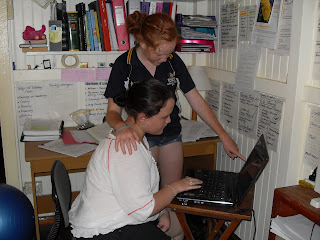
"Truth is so excellent that if it praises but small things they become noble" Leonardo Da Vinci
Embedded Professional Learning - Week 2:
The thoughts of Da Vinci have always fascinated me. Well perhaps not always, but certainly for a long time before he became fashionable again (move over Dan Brown!)
The Truth is, I am discovering some fairly amazing truths about myself. I am wondering how it is possible to have such a passion for developing young people, yet be so overwhelmed by the challenge of it all. Teachers who have been 'at it' for some time, make it look so easy.
The Truth is, this is much harder than I expected, and my natural instincts don't seem to be helping much. When I decided to become a classroom teacher, I did not expect to experience so much failure. How is it possible to plan so carefully, prepare so thoroughly and still crash and burn? My Mentor Teacher says I am doing ok. I feel like I have been stolen away and some incompetent git has been put inside my skin.
The Truth is, I am running entirely on faith right now and desperately searching for a little of that 'nobility' that Leo mentions.
Embedded Professional Learning - Week 2:
The thoughts of Da Vinci have always fascinated me. Well perhaps not always, but certainly for a long time before he became fashionable again (move over Dan Brown!)
The Truth is, I am discovering some fairly amazing truths about myself. I am wondering how it is possible to have such a passion for developing young people, yet be so overwhelmed by the challenge of it all. Teachers who have been 'at it' for some time, make it look so easy.
The Truth is, this is much harder than I expected, and my natural instincts don't seem to be helping much. When I decided to become a classroom teacher, I did not expect to experience so much failure. How is it possible to plan so carefully, prepare so thoroughly and still crash and burn? My Mentor Teacher says I am doing ok. I feel like I have been stolen away and some incompetent git has been put inside my skin.
The Truth is, I am running entirely on faith right now and desperately searching for a little of that 'nobility' that Leo mentions.






